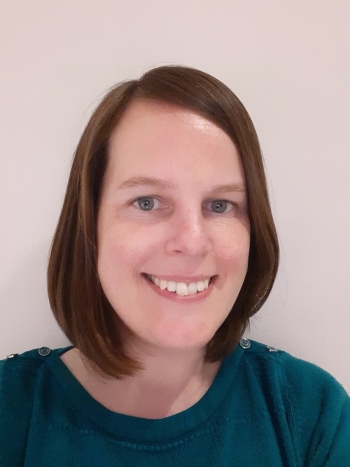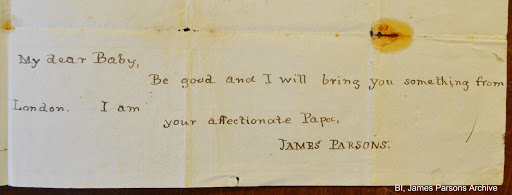Borthwick Newsletter - April 2021
Posted on 30 March 2021
April in the Archives - delve into our catalogues with this month’s featured description
"Why Black Trade Unions?", issued by the Wages Commission, University of Cape Town, 2 April 1973 [Records relating to the Black Sash movement and the National Union of South African Students, COR/1/19]
What's New?
March marked one full year since staff at the Borthwick started working from home. In that time we’ve had one or two false starts at getting back onsite. But with the re-opening of schools and universities, we’re pleased to announce that the Borthwick has also re-opened to University of York staff and students, as of the 29th March. Visits are by appointment only, Mondays to Wednesdays - please email or telephone the searchroom for more information or to make a booking. Unfortunately we do not yet know when we can re-open to the general public, as this will depend on government guidance, but as soon as we know we will be announcing it via our website and social media channels. In the meantime we are, as ever, available to answer your enquiries via email, social media or telephone.
Meanwhile our conservation team has been catching up with some environmental monitoring this month. This has been even more important than usual this year, as the number of staff in the building has been very limited, and we are less likely to notice when things might be going wrong. This can lead to bigger problems, such as mould or pests getting out of hand, or leaks going unnoticed.
As well as general building checks, we collect specific environmental data, particularly in our strongrooms. We collect temperature and relative humidity readings with data loggers, which allow us to make sure that the environment is staying as steady as possible. We check UV levels around UV filtered windows and lights, to make sure that the filters are still functioning, and illumination levels in access and exhibition areas. We have pest traps around the building, which allow us to monitor the types of pests we have as well as whether numbers are increasing or decreasing. Less frequently we also monitor dust levels, to make sure our cleaning regimes are appropriate. More detailed information about how and why we protect our collections through the environment can be found in the British Library’s preservation guides: https://www.bl.uk/conservation/guides.

Finally the Borthwick will be welcoming a new member of staff in the near future. We’re pleased to announce that Laura Yeoman has been appointed to the role of Access and Digital Engagement Archivist, with responsibility for access (including distance services, web development and social media), teaching medieval palaeography, and working with our medieval archives. Laura is already very familiar with York and with the Borthwick. She has been working at York Explore since 2014, most recently as the Archivist responsible for Access and Engagement, but before completing her archival qualification at University College, Dublin, in 2007, she was also a Borthwick trainee from 2005-2006.
Laura has a particular interest in higher education and for the past few years she has been working with students, academics, artists and community groups, helping them engage with York Explore's archives in ways which are meaningful to them. Her work there includes the Gateway to History project. She also spent seven years working as a business archivist for The Royal Bank of Scotland Group in Edinburgh, and has mentored candidates on the Dundee University degree course in Archives and Records Management. Currently, Laura is the Treasurer for the Archive and Records Association’s Archives for Learning and Education Section, and a continuing professional development mentor and assessor for the ARA. We’re looking forward to her joining the team!
New Accessions
In March we accepted a gift of papers relating to architects George Pace and John Hutchinson which was purchased at auction and generously donated to us. Hutchinson, whose archive was mentioned in a previous newsletter, worked for George Pace and his partner Ron Sims in York and the prints and drawings will, we hope, add to our knowledge of both. You can read about our past work on the extensive Pace and Sims architectural archive on our Borthwick Blog.
We also received a long awaited new accession which had to be flown to York all the way from New Zealand! The gift comprises wartime service medals and a file of papers belonging to John William Todd, who is credited with helping to invent the recipe for the Aero chocolate bar. Todd was an engineer by trade who worked for York’s Rowntree confectionery company and was involved in the development of the distinctive aerated chocolate that gave the Aero its name and appearance. Unfortunately for any budding chocolatiers the ‘secret’ recipe is not included in the accession, but the papers will complement our current extensive Rowntree holdings, including the Rowntree company archive which can be searched in full on our online catalogue Borthcat.
New Catalogues
In addition to preparing for reopening, the searchroom team have also been adding to the parish catalogues on Borthcat. Most recently, the parish records of Aughton with East Cottingwith which date back to 1610, and the parish records of York Holy Trinity, Micklegate, which dates back to 1548. The church of Holy Trinity began life as a Benedictine monastery founded in 1089, although the present building dates from the 12th century. Holy Trinity includes stained glass by John Ward Knowles, whose workshop was on Stonegate, George Pace, and another York based artist Harry Stammers. The Borthwick holds the archives of all three, you can find them on Borthcat under the subject term ‘glass painting and staining’, along with related archives such as the records of the York Glaziers Trust who look after the famous windows in York Minster.
Number of archival descriptions on Borthcat on 1st April 2021: 79,679
We have also recently added a new catalogue for one of our Methodist circuits. The York Centenary Circuit was formed in 1888 from the old New Street Circuit. In the Methodist church a circuit is a group of chapels served by a team of ministers - sometimes quite a large group! In this case, the Centenary Circuit included Centenary Chapel itself, as well as Melbourne Terrace Chapel, St George's School and the Layerthorpe Wesleyan Mission Hall in York, and chapels at Deighton, Dunnington, Heslington, Heworth, Fulford, Gate Helmsley, Murton, Naburn, Osbaldwick, Stamford Bridge, Stillingfleet, Warthill and Wheldrake. The Centenary Circuit catalogue lists the administrative records you might expect, as well as a few you might not - such as the Local Preachers’ Horse Hire Fund which was still operational from 1916 to 1978!
Borthwick in the Media
Our Rowntree, York County Hospital and Clifton Hospital archives have made an appearance in a zoom talk by Dr Catherine Oakley, Executive Director of The Rowntree Society, on ‘Rowntree, York and the 1918 Flu Pandemic’. Although the talk was originally given on the 26th March, due to its popularity it will be repeated on the 16th April and you can buy tickets on the Clements Hall Local History Group website. It will also be recorded for those who cannot attend either.
On the 22nd April you can join our Northern Way project team, together with the Medieval Studies Research Group at the University of Lincoln and the Lincoln Record Society for a free interactive workshop on ‘Power, Piety and Plague: the Northern church in the 14th Century’. The workshop will draw on the Registers that were used to ‘record the business of the Archbishops’ of York in the fourteenth century, an era of political turmoil, almost incessant warfare and climatic and public health catastrophes’.
Archive of the Month: Records of Reverend James Parsons
What is it?
The personal and professional papers of Congregationalist minister James Parsons who was born in Leeds in 1799 and gave up a legal career to study theology at the Academy for the Training of Independent Ministers. He was ordained in York in 1822 and became minister at Lendal Chapel, and then later at Salem Chapel. He was an extremely popular minister and speaker, and many of his sermons were published in ‘The Pulpit’.
Where can I find it?
The full catalogue of the Records of Reverend James Parsons can be found on Borthcat
Why is it Archive of the Month?
There’s always a risk that the archive of a 19th century Congregationalist minister might sound rather a dry prospect, but not so with James Parsons. His archive gives ample evidence of his successful and varied religious career, but also of his warm and loving family life - captured best perhaps in the sweet postscript to his new baby seen in the image below.

The earliest survival is also one of the most fascinating; a letter written to Reverend George Burder from Robert Morrison, another congregationalist minister and an early Protestant missionary to China. The letter, sent from Canton, probably came into the hands of James’ father, Reverend Edward Parsons, and thus to James, via the family connection with the London Missionary Society. Morrison pioneered the translation of the Bible into Chinese and later presented a copy to King George IV. You can read more about Morrison on wikipedia. Another notable early survival, and one which also provides an insight into Parsons’ childhood, is the 1816 Report of the Leeds Juvenile Missionary Society, written by a teenage James and his sisters Margaret, Mary Ann, Rebecca and Frances.
Even those records which attest to his church career can tell us a great deal about Parsons the man; his personal faith and his public role. Three ‘expressions of faith’, public declarations of faith intended to be read aloud or published, are included in the archive, two with annotations by Parsons. The first, by Thomas Layman of York, gives an account of his awakening to Christianity through Parsons’ preaching. Another, by William Hargrove, discusses his life as a Christian and potentially joining Parsons’ church. Letters sent to Parsons which survive in the archive further attest to the esteem and affection in which he was held by his contemporaries.
But it is Parsons’ own letters, two to his mother and the remainder to his wife Mary, which leave the greatest impression. Written for private, not public, consumption they touch on intimate family matters - including pregnancy, breastfeeding and weaning, the trials of parenting, private worries, and his love for his wife and children. Together with his more public papers they leave a valuable record of Parsons and the world he lived in.
Have a safe and sunny April everyone!

